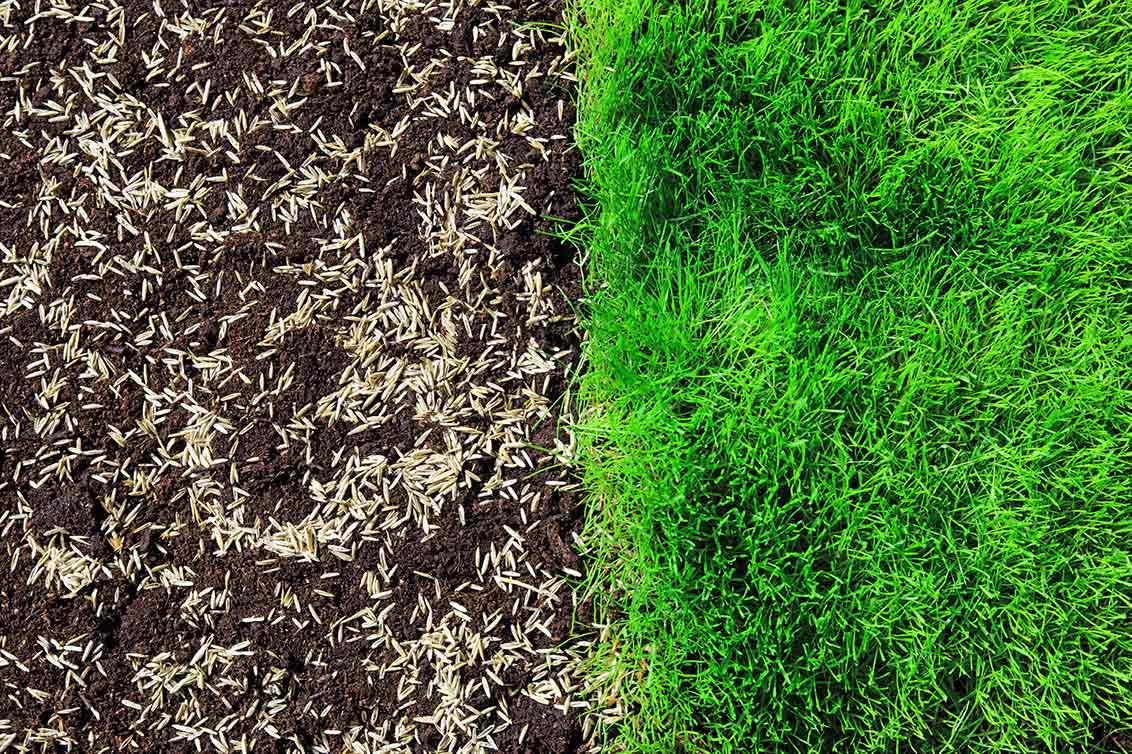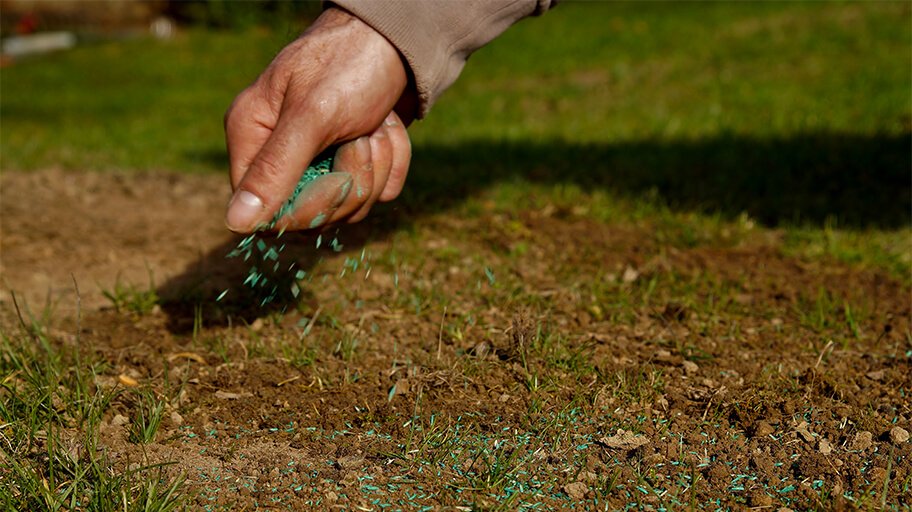You’ve probably tried throwing some grass seed down before, maybe grabbed a bag from the hardware store on a weekend when you had some free time, but the results were disappointing. Those embarrassing thin spots and bare patches in your lawn seem to mock you every time you pull into your driveway, especially when you notice your neighbor’s lawn looking thick, green, and absolutely perfect.
Here’s the thing that most people don’t realize: timing isn’t just important when it comes to overseeding your lawn – it’s absolutely everything. You could have the best grass seed money can buy, perfect soil conditions, and all the enthusiasm in the world, but if you plant at the wrong time, you’re essentially throwing your money and effort out the window. Maryland’s unique climate makes timing even more critical since we’re sitting in the “transition zone” where both cool-season and warm-season grasses can potentially grow.
In this guide, we’re going to walk through exactly when you should overseed your lawn in Maryland, why these timing windows matter so much, and how to avoid the common mistakes that leave so many homeowners wondering why their grass seed never seems to take.
Understanding Maryland’s Climate for Overseeding Success
Maryland’s location puts us in a tricky spot for lawn care – we’re sitting right in the transition zone where the climate is challenging for grass establishment. This means understanding our unique conditions is crucial for overseeding success.
Maryland’s Transition Zone Challenges:
- Too hot in summer for some cool-season grasses to thrive easily
- Too cool in winter for warm-season grasses to survive
- Creates narrow windows where conditions are just right for new grass
- Makes timing more critical than in other parts of the country
Why Cool-Season Grasses Work Best Here:
- Tall fescue, fine fescue, and perennial ryegrass handle Maryland winters well
- Can tolerate moderate summers if properly established
- Need strong root development before facing heat or cold stress
Maryland Weather Patterns That Help You:
- Natural rainfall typically increases in fall and spring
- Fall brings less weed competition for new seedlings
- Soil stays warm longer into fall than air temperatures

The Two Prime Overseeding Windows in Maryland
Fall Overseeding (The Golden Window)
September through mid-October is hands down the best time to overseed your lawn in Maryland. During this period, soil temperatures stay warm (60-70°F) for quick germination while air temperatures cool down, reducing stress on new seedlings. You’re also working with nature’s schedule – fall brings more consistent rainfall and weeds slow their growth.
This timing gives your new grass 6-8 weeks to establish strong roots before winter hits. Wait until late October or November, and you’re asking new grass to survive winter without proper root development.
Spring Overseeding (The Secondary Option)
Spring overseeding works in Maryland but comes with more challenges. Late March through early May gives you the best window if you missed fall or need to fix winter damage. The problem is you’re fighting aggressive spring weeds that compete with new grass, plus racing against time to establish before summer heat arrives.
Signs Your Maryland Lawn Needs Overseeding
Thin or bare patches are obvious signs, especially after Maryland’s hot summers or harsh winters. Areas with heavy foot traffic from kids playing or pets running the same paths will naturally thin out over time. Disease damage from fungal issues or pest problems like grubs can also leave your lawn looking patchy and weak.
If your lawn looks sparse compared to when you first moved in, or if you can see soil between grass blades in multiple areas, overseeding will help restore thickness and health.
Step-by-Step Maryland Overseeding Timeline
Success with overseeding comes down to proper preparation and timing each step correctly. Here’s the timeline that works best for Maryland’s fall overseeding window.
Your 6-Week Overseeding Schedule:
6 Weeks Before (Early August):
- Test your soil pH and nutrient levels
- Address any major soil issues like compaction or drainage problems
- Start planning your seed selection based on soil test results
4 Weeks Before (Late August):
- Apply pre-emergent herbicide if needed for weed control
- Assess your lawn’s condition and measure areas needing overseeding
- Order your grass seed and any soil amendments
2 Weeks Before (Early September):
- Mow your lawn shorter than normal (about 2 inches)
- Dethatch if you have more than ½ inch of thatch buildup
- Rake up debris and prepare the soil surface
Overseeding Week (Mid-September):
- Check weather forecast for consistent moisture over next 2 weeks
- Apply seed using proper rates for your grass type
- Lightly rake seed into soil contact
- Begin daily watering schedule
After Seeding (Ongoing):
- Water lightly daily for first 2-3 weeks
- Reduce watering frequency but increase depth once grass establishes
- Avoid heavy foot traffic for 6-8 weeks
- First mowing when new grass reaches 3-4 inches

Choosing the Right Grass Seed for Maryland
The three main options that work well here are tall fescue for high-traffic areas and durability, fine fescue for shady spots under trees, and perennial ryegrass for quick establishment and repair work. Tall fescue handles Maryland’s summer heat better than most cool-season grasses and develops deep roots that survive our occasional droughts.
For most Maryland homeowners, a quality seed blend works better than single varieties because it gives you the benefits of multiple grass types. Look for blends that include at least 50% tall fescue for durability, with fine fescue for shade tolerance and perennial ryegrass for quick germination.
Common Maryland Overseeding Mistakes to Avoid
The biggest mistake Maryland homeowners make is waiting too long in fall – seeding in late October or November doesn’t give grass enough time to establish before winter. Another common error is poor soil preparation, like throwing seed on hard, compacted soil or not removing thick thatch that prevents seed-to-soil contact.
Many people also mess up the watering schedule, either flooding new seed or letting it dry out completely. New grass seed needs consistent moisture but not standing water. Skipping soil testing is another costly mistake since Maryland soils often have pH issues that prevent proper nutrient uptake.
Professional vs. DIY Overseeding in Maryland
DIY overseeding can work if you have the time, equipment, and knowledge to do it right. However, most homeowners underestimate what’s involved – proper soil testing, timing applications correctly, having the right equipment for seed distribution, and maintaining proper watering schedules.
The biggest advantage of professional overseeding is local expertise about Maryland’s specific challenges, soil conditions, and optimal timing. Professional lawn care companies also provide guarantees on their work and follow-up treatments to ensure establishment. When you factor in equipment rental costs, seed prices, and the risk of poor results requiring a do-over, professional overseeding often provides better value.
Conclusion
Getting the timing right for overseeding your lawn in Maryland really comes down to working with our unique climate instead of fighting against it. September through mid-October gives you the best shot at success because soil temperatures are still warm, air temperatures are cooling, and nature provides the consistent moisture your new grass needs to establish strong roots before winter.
The key takeaway here is that successful overseeding isn’t just about throwing seed on the ground and hoping for the best. Proper soil preparation, choosing the right grass varieties for Maryland conditions, and following a timeline that gives your new grass the best chance to establish are what separate the homeowners with thick, healthy lawns from those still dealing with thin, patchy grass year after year.
If you’re tired of dealing with disappointing results and want a lawn that finally lives up to your expectations, consider having a professional soil analysis done before your next overseeding project. Contact us to learn how we can help you achieve the thick, healthy lawn you’ve been wanting. Your lawn has the potential to be the best-looking one in the neighborhood – it just needs the right approach at the right time.

Recent Comments